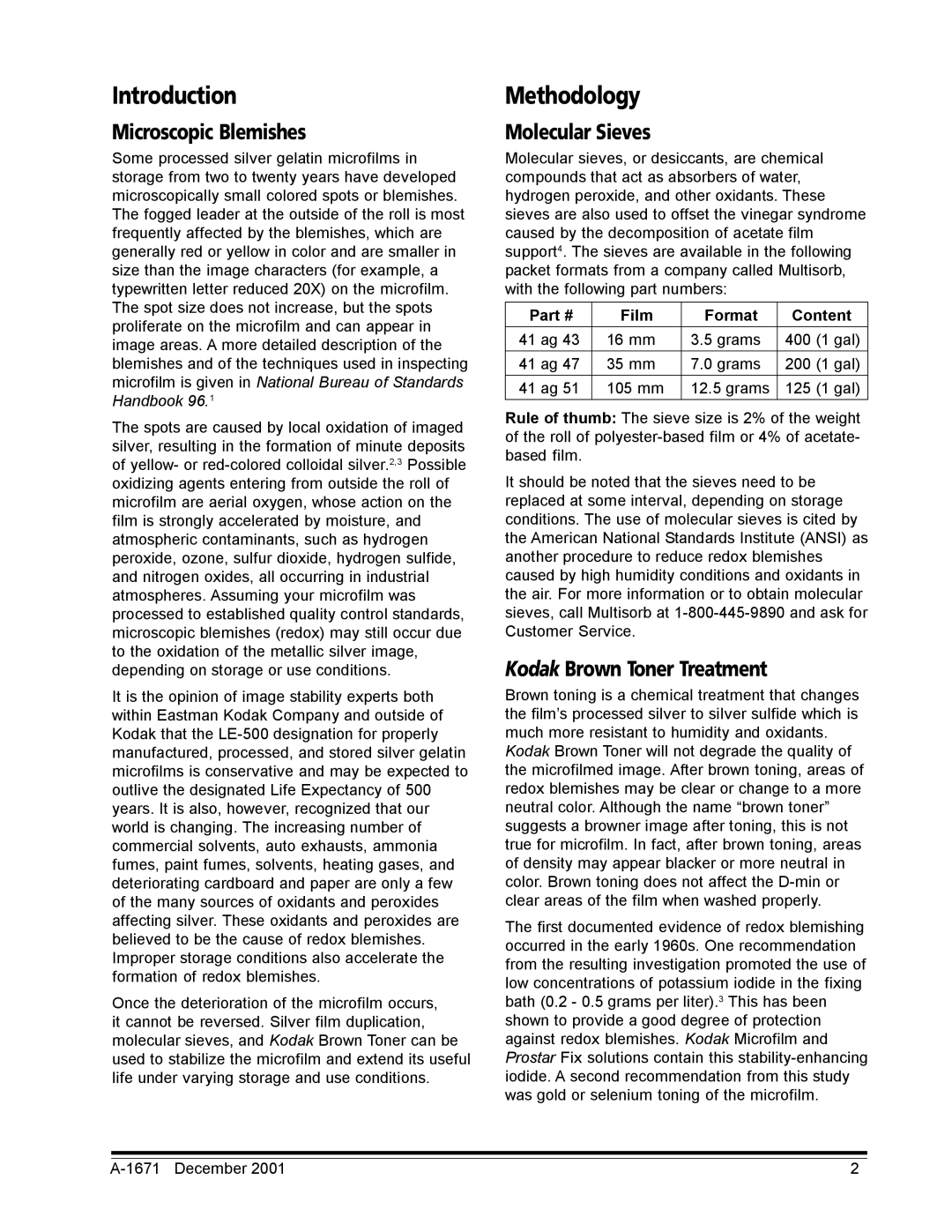A-1671 specifications
The Kodak A-1671 is a sophisticated film camera that exemplifies the innovative spirit and photographic excellence associated with the Kodak brand. Designed to cater to both amateur photographers and seasoned professionals, the A-1671 stands out for its combination of functionality and ease of use.One of the main features of the Kodak A-1671 is its robust build quality. The camera is crafted from durable materials, ensuring it can withstand the rigors of everyday use while retaining its aesthetic appeal. Its compact design makes it portable and convenient for photographers on the go.
In terms of specifications, the Kodak A-1671 boasts a high-resolution lens that delivers sharp and vibrant images. The camera incorporates a precision-engineered optical system, allowing for exceptional clarity and color reproduction across various lighting conditions. Additionally, the A-1671 features an adjustable aperture and shutter speed, giving users the flexibility to experiment with different exposure settings. This feature is particularly useful for capturing dynamic scenes or working in challenging lighting environments.
One of the standout technologies integrated into the Kodak A-1671 is its advanced metering system. This system evaluates the scene's lighting conditions and provides users with accurate exposure readings, ensuring optimal results with every shot. The camera also includes a built-in flash, which is ideal for low-light situations and allows photographers to achieve the perfect balance between foreground and background illumination.
Another notable characteristic of the Kodak A-1671 is its intuitive interface. The camera is equipped with an easy-to-read LCD display that provides clear information about settings and battery life, making it user-friendly. The control layout is designed for quick access to essential functions, allowing photographers to adjust settings on the fly without disrupting their creative workflow.
Furthermore, the Kodak A-1671 is compatible with a variety of film stock, offering photographers the versatility to choose their preferred medium. This compatibility makes it an excellent choice for both black-and-white and color photography, catering to diverse artistic preferences.
In conclusion, the Kodak A-1671 is a standout film camera that combines durability, advanced technology, and user-friendly features. Whether capturing landscapes, portraits, or action shots, this camera empowers photographers to unleash their creativity while producing stunning images. With its blend of classic design and modern capabilities, the Kodak A-1671 remains a cherished tool for photography enthusiasts.
